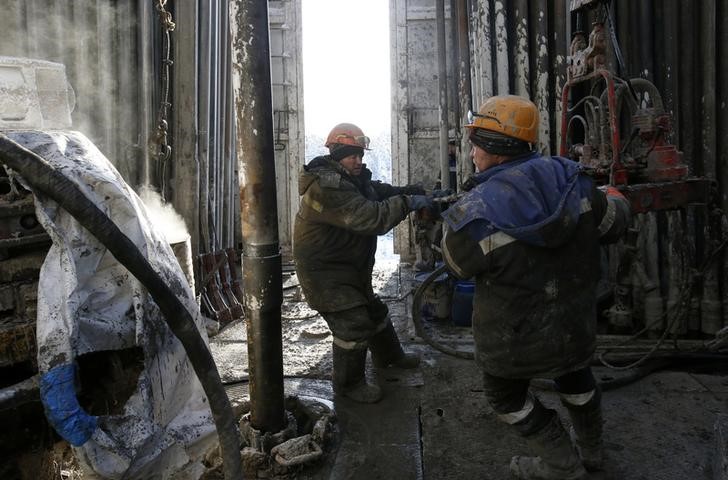
By Alex Lawler and Deep Kaushik Vakil
LONDON (Reuters) -Oil fell more than 1% on Wednesday, losing ground for a third straight session on hopes of a ceasefire agreement in the Middle East and by rising crude inventories and production in top consumer the United States.
Expectations that a ceasefire agreement between Israel and Hamas could be in sight have grown following a renewed push led by Egypt, even as Israeli Prime Minister Benjamin Netanyahu has vowed to go ahead with a long-promised assault on Rafah.
futures for July were down $1.24, or 1.4%, to $85.09 a barrel by 1145 GMT, having hit $84.78, their lowest since March 15.
U.S. West Texas Intermediate crude futures for June were down $1.33, or 1.6%, to $80.60, after touching their lowest since March 21.
“The crude market is weighed down by continued hopes for a ceasefire,” said Ole Hansen of Saxo Bank.
“In addition, stubborn U.S. inflation has further reduced rate cut expectations.”
U.S. Federal Reserve officials are concluding their latest two-day policy meeting on Wednesday and are expected to hold interest rates steady. A rate cut would act as a boost to economic growth and fuel demand.
“Continued signs of inflation also raised concerns about demand for crude oil. This comes ahead of the U.S. driving season, where demand for gasoline rises strongly,” ANZ analysts said in a report on Wednesday.
Further weighing on prices were separate reports that inventories rose and production increased.
remove ads
.
U.S. crude inventories rose 4.906 million barrels in the week ended April 26, according to market sources citing American Petroleum Institute figures, which defied expectations for a decline of 1.1 million barrels.
Traders will be waiting to see if official data from the Energy Information Administration (EIA) at 1430 GMT confirms the trend.
On Tuesday, the EIA said U.S. production rose to 13.15 million barrels per day (bpd) in February from 12.58 million bpd in January, its biggest monthly increase in about 3-1/2 years.

